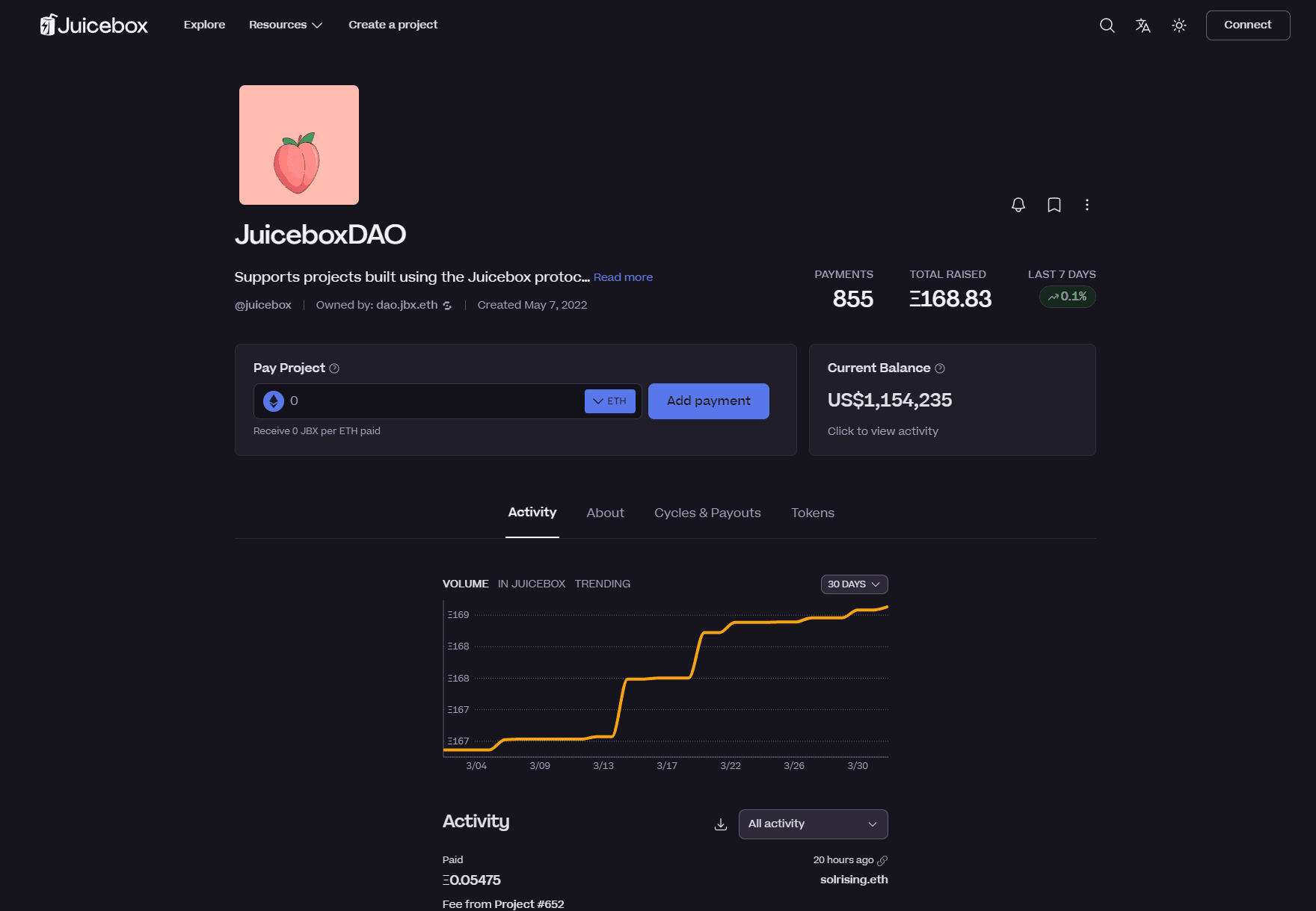Introduction to Juicebox
Juicebox is a pioneering protocol developed on the Ethereum blockchain, focusing on enabling flexible and programmable treasury management for projects. This decentralized finance (DeFi) platform is crafted to assist project founders, DAOs (Decentralized Autonomous Organizations), and communities in financing their operations transparently and efficiently. At its core, Juicebox provides a framework where projects can set up funding cycles, mint project tokens in response to contributions, and establish governance models through its native token, $JBX.

JuiceBox’s own funding DAO, found here.
Key Features of Juicebox
- Programmable Treasuries: Juicebox allows projects to configure how their treasuries collect funds and under what conditions these funds can be distributed or reclaimed. This programmability offers unprecedented flexibility, enabling projects to adapt their financial operations over time.
- Decentralized Governance: Through the $JBX token, Juicebox places governance in the hands of its community, allowing token holders to vote on proposals that dictate the protocol’s future and the distribution of funds within the treasury.
- Funding Cycles: One of the protocol’s standout features is its support for customizable funding cycles. Projects can define the duration, allocation, and specific conditions of each cycle, providing a tailored approach to project financing.
- Token Minting and Burning: Projects start with zero tokens and mint new ones as contributions are received. This mechanism supports dynamic token supply management, with the option for projects to burn tokens to adjust supply or reward contributors.
The Role of $JBX Token
The $JBX token is central to Juicebox’s ecosystem, serving multiple purposes:
- Governance: $JBX holders can participate in governance decisions, influencing key aspects of the protocol’s development and operational guidelines.
- Incentives: The protocol uses $JBX tokens to incentivize contributions and participation in the ecosystem, rewarding users for their engagement and support.
Juicebox’s Ecosystem and Expansion
Juicebox’s architecture is designed to support a wide range of projects, from small community initiatives to large-scale DAOs. Its ecosystem is ever-growing, with an increasing number of projects choosing Juicebox for its transparent, flexible, and community-driven approach to treasury management. The protocol has sparked interest not only for its technical capabilities but also for fostering a culture of open collaboration and innovation within the DeFi space.
Challenges and Considerations
Despite its innovative approach, Juicebox faces challenges typical of DeFi platforms, including smart contract security, scalability, and user experience. The protocol continuously evolves, addressing these challenges through upgrades and community feedback. The reliance on Ethereum also exposes Juicebox to the network’s fluctuating gas fees and scalability issues, which could affect smaller projects and contributors.
Future Prospects
Looking ahead, Juicebox aims to expand its offerings, incorporating more features that facilitate seamless treasury management, enhanced governance mechanisms, and broader blockchain interoperability. The focus remains on strengthening the protocol’s security, scalability, and user-friendliness, ensuring Juicebox remains at the forefront of DeFi treasury management solutions.
Conclusion
Juicebox represents a significant advancement in how projects can manage finances and engage communities on the Ethereum blockchain. With its innovative funding cycles, decentralized governance model, and the programmable treasury, Juicebox is poised to play a critical role in the evolution of DeFi. As the platform continues to grow and evolve, it offers a promising avenue for projects looking to harness the power of blockchain for transparent and efficient treasury management.





